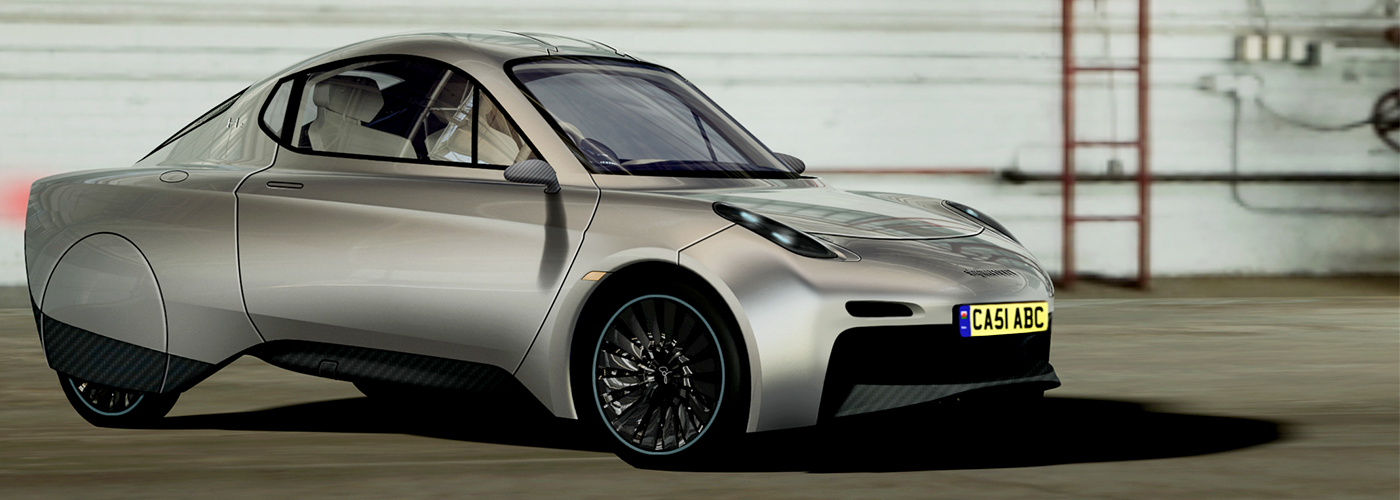Transportation accounts for over 14 percent of global greenhouse gas emissions. Cars alone burn a massive portion of these fossil fuels. Additionally, the global auto industry projects to manufacture over 107 million vehicles in 2020.
But what if cars didn’t have to run on petroleum-based fuel, and the auto industry didn’t have to continue dumping resource-intensive products on the market? After over 15 years of tireless engineering and ingenuity, U.K.-based company Riversimple launched its prototype in February 2016.
The purpose of the company is to pursue systematically the elimination of environmental impact of personal transport. Tweet This Quote
The “Rasa” is a sleek, ice blue, carbon-fiber car that sits two passengers. It’s powered by a hydrogen fuel cell instead of fossil fuels, providing a range of 300 miles and weighing less than half the average compact car. You may have seen it gracefully weaving through the streets of London. And emissions? Zero.
It’s not only about the sexy, environmentally conscious car; it’s also the company’s entirely new business model. Instead of selling cars, Riversimple will retain ownership and offer mobility as a service. One monthly fee covers everything. In the long-term, they see a world of distributed manufacturing, where small towns everywhere can employ hundreds to spawn local industry.
Unreasonable sat down with Founder and CEO, Hugo Spowers, at his workshop in Llandrindod Wells, Wales, to discuss racing cars and the risk and struggle involved in sparking a sustainable mobility revolution.
The first thing I wanted to ask you, Hugo, is what you were like as a child?
H: What I was like as a child? Gosh, what was I like as a child? Well, I was more interested in nature than anything else. So studying, identifying, collecting anything to do with nature, really, was my main thing before I caught the motor racing disease at about age 15 or so.
And what was it that attracted you to racing? What was it about racing cars?
H: As a sport, I always describe good driving as being sort of like dancing ballet on the tightrope. To really ring the maximum amount out of a car, you absolutely have to be on the very, very edge. People think of driving fast as being a really aggressive thing. But if you want to get anywhere close to that 100 percent, you’ve got to become incredibly fine and delicate. Trying to string that together, corner after corner, lap after lap, has such finesse to it when it’s done well.
What got you so interested in designing cars?
H: I suppose I got interested in the design of cars because of motor racing. Trying to think back now … I think I sort of enjoyed the whole pioneering saga of early motorsport and land speed records and the human story before I was really interested in the vehicle technology, but that followed pretty soon thereafter. So basically, I wanted to design racing cars and drive racing cars. But, I wanted to drive the cars that I designed.
I also think it’s a very complex and knotty problem, designing a car to go around multiple different corners, fast and slow and in all sorts of conditions – and beat all the other cars at that. It’s a very complex design challenge, but the motivation is utterly single-minded. It’s not like designing a road car, where you’ve got to deal with the accounting department and the marketing department that want more chrome strips on the side, things like that. It’s a pure objective – a very, very pure engineering exercise.
In University, what did you study that taught you how to design cars?
H: Oh, engineering. It was engineering science at Oxford and highly theoretical, really closer to physics than engineering in some respects. But what it did do was give me the fundamentals so that I could pick up a textbook on any subject and understand it.
I did purposely try and avoid anything to do with electricity or electronics because you didn’t need them for designing racing cars in the 70s. Now, I wish I’d paid a bit more attention because the car’s riddled with electricity and electronics. But luckily there are some other people who know more about it than I do.
When did you start racing?
H: I didn’t start racing until just after University, when I was 22 or 23. I started working in the motor racing business, and then I built my first racing car when I was 26. That attracted an investor who suggested opening a business together to produce more of the racing cars I was designing.
After a few years of that, I went on my own with a lot of work to supplement the motor racing activity, which is a reliable way of losing money. I set up a business, and in the same workshops I was restoring race cars for wealthy customers. That funded the first business, but it gradually switched over because you tend to do the things that are bringing in the bacon. I had some really fantastic cars through the workshops over the years.
Ultimately, we’ve got to completely decouple from fossil fuels and power our cars from renewable energy. Tweet This Quote
And you were actually racing the cars you built, right?
H: I was racing them in Formula 4 and up to Formula 3. I wanted to race them much more than I did, but I never had enough money to do it full time.
By that stage, though, my interest was slightly waning in motor sport because it’s all so regulated to prevent any significant innovation. It’s always held up as being the forefront of automotive engineering, but in fact it’s so governed by TV viewing numbers and things like that, the last thing they want is a car that is significantly better than anybody else. It doesn’t make for an exciting race series. The paradox is that these rules are so tight that it’s very difficult to make any substantive innovations. So the only way of winning is by incremental optimization. That, of course, is massively more expensive than making big steps. It also takes the challenge out, and it gets more and more out of reach financially.
The real killer reason was that I used to defend my involvement in motorsport and my interest in the environment on the basis that motorsports are the quickest and cheapest ways to make cars more efficient, which I still believe is true. But I reached the conclusion that we need to get rid of combustion engines all together, so prolonging the tenure of the combustion engine didn’t really stack up any longer.



